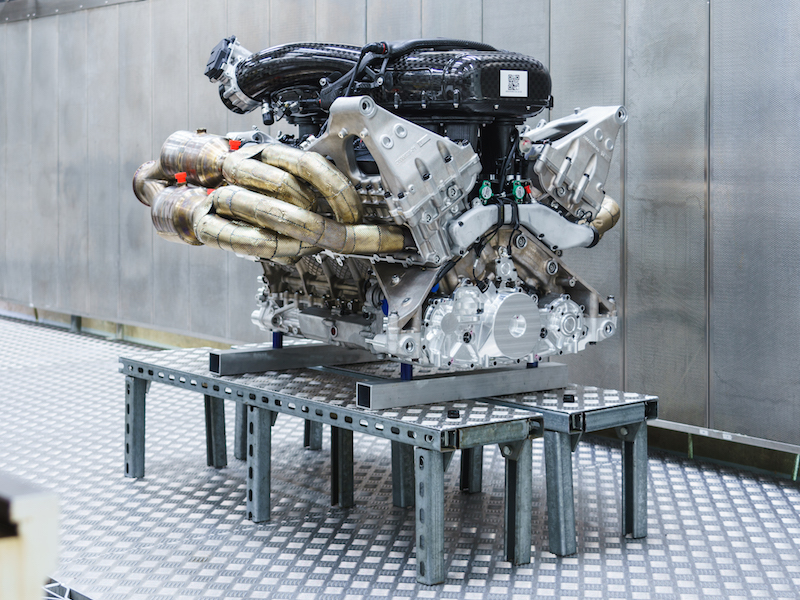

You’ve heard the Aston Martin Valkyrie’s naturally aspirated V12 in full scream. Now Aston’s let fly with a few details of the ICE that will soon provide most of the motive force to the $3.3 million hybrid hypercar, an engine whose design brief, as today’s press-release relates, was “to create the ultimate expression of the internal combustion engine.” Mission pretty well accomplished, at least for a road-going vehicle.
Aston’s 6.5-liter free-breather, developed with Cosworth, produces 153.8 horsepower per liter, reaching 1,000 hp at 10,500 rpm (with fuel cutoff at a screaming 11,100). Horsepower will be slightly less than the figure noted in that that Tweet from Cosworth some months back, but will still exceed that of the Ferrari LaFerrari hybrid’s 763-hp V12. Peak torque of the high-revving monster, a fully stressed element of the Valkyrie’s chassis design, is 546 pound-feet at 7,000 rpm, while in the production car, that figure will likely be backfilled at lower revs by a battery hybrid-electric system to be revealed later.

The V12, which in the Valkyrie will be attached to a seven-speed sequential gearbox built by Ricardo, weighs in at a svelte 454 pounds (206 kg) with the majority of the engine’s internals machined from solid metal. Those include titanium connecting rods and F1-spec pistons, and a billet-machined crankshaft that’s 50 percent lighter than the one used in the Aston Martin One-77’s 750-hp V12. That engine, also Cosworth-developed, was formerly the most powerful naturally aspirated road-car engine. By comparison, Aston Martin points out in the release, Cosworth’s 3.0 liter V-10 F1 racing engines from the early ’00s—if scaled up to 6.5 liters—would weigh 463 pounds (210 kg). That Aston would compare the two engines isn’t surprising, considering the Valkyrie engineering lead, Adrian Newey, told Top Gear last year the new V12 was “loosely derived” from the 2.4-liter, 18,000 rpm CA2010 V8 engine Williams used in the team’s 2010 F1 car.
With the production Valkyrie (150 will be built, and all are spoken for) expected to hit sometime in 2019, expect to see prototypes running around soon, screaming their fool heads off.














